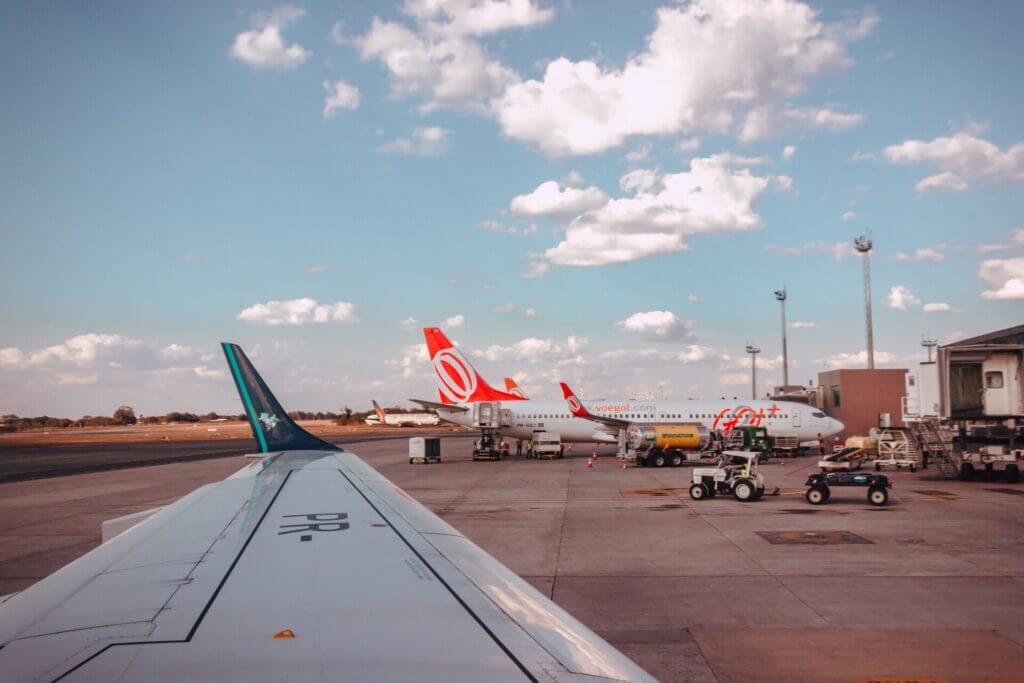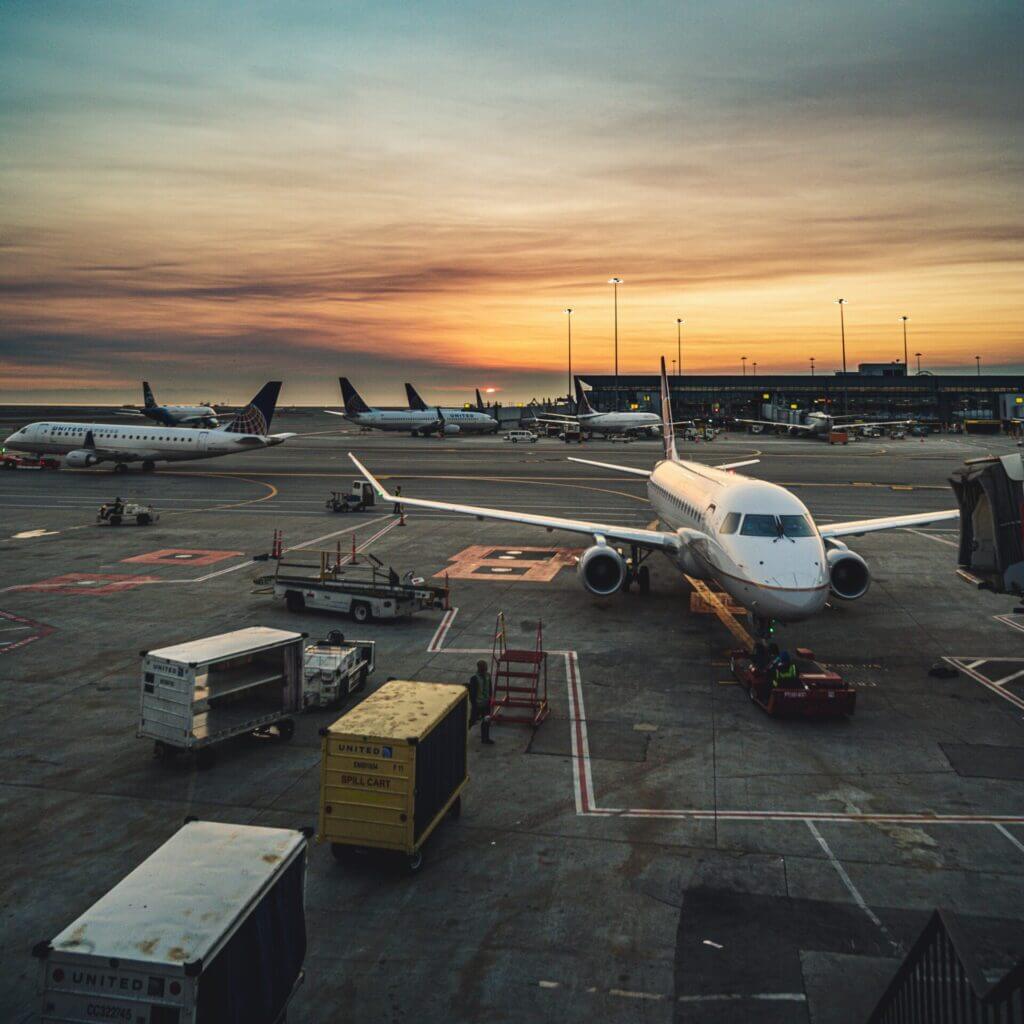In previous notes, we have seen what are the stages of stages of flight and what is ground handling of aircraft. Now, what about the pre-flight inspection on airplanes? Today at 360 Aviation Life we will explain in detail what this important process is all about.
At 360 Aviation Life Technical Aviation Academy our experts will guide you every step of the way to become an outstanding professional in the aviation industry. Enroll in our courses today and get the training you need to get your career off the ground.
Table of Contents
What is an aircraft pre-flight inspection?
Aircraft pre-flight inspection is an essential procedure that involves visual and functional verification of the aircraft‘s condition, documentation, and operational conditions prior to a flight.
Supervised by the instructor pilot, this process ensures safety, avoids omissions and deviations, and verifies airworthiness. Coordination, attention to detail, and effective communication are key in this assessment, which seeks to maintain operational safety and comply with established requirements.
What is the aircraft book for preflight inspection?
Better known as “Pilot Operating Handbook” or “POH” (Pilot Operating Handbook) is an essential guide provided by the manufacturer of an aircraft. It contains information on the operation, safety procedures and performance specific to that aircraft.

The POH is essential for carrying out pre-flight inspections on aircraft, as well as safe flight planning and operation. It provides crucial data that helps pilots maintain safety and efficiency in all phases of flight.
Who is in charge of the pre-flight inspection?
Pre-flight inspection on aircraft is a responsibility shared among several team members, each with specific roles:
- The instructor pilot: Supervises and controls that the pre-flight inspection is performed following the proper procedure and all safety standards. It also verifies the academic, physical and mental condition of the student/co-pilot.
- The student/co-pilot: Performs the pre-flight inspection, verifying visually and functionally the condition of the aircraft, documents, and operational conditions.
- Qualified technical personnel: Sign the daily service, confirming that the aircraft is airworthy.
- Operational Safety personnel: Oversees safety on the airfield apron, identifying hazards and ensuring precautions are taken during the pre-flight inspection.

All of these roles are essential to ensure that the aircraft is in safe and operational condition prior to each flight. At 360 Aviation Life Technical Aviation Academy we have a wide variety of courses that will help you become a professional pre-flight inspector. Enroll today and start your career in the aviation industry!
What are the stages of a pre-flight inspection?
Pre-flight inspection on aircraft can be summarized in five key steps, which are:
Step 1 – Documents and Flight Log
Step 2 – Exterior Inspection
Step 3 – Fuel and Cargo
Step 4 – Meteorology and Flight Plan
Step 5 – Booth and Communication

Training of technicians, maintenance and air traffic personnel is essential to ensure flight safety. At 360 Aviation Life we can give you the training you need to enter the wonderful world of aviation. Sign up for our courses today and get your career off the ground!
What is checked during a pre-flight inspection on aircraft?
Conducting an effective preflight inspection requires attention to numerous details and key aspects. Some of the specific considerations to be taken into account during this process are explained below:
- Knowledge of the Aircraft: It is essential to have a thorough knowledge of the aircraft to be inspected. This includes understanding the purpose and operation of all ports, ducts, lines, gauges, knobs and aircraft components. This knowledge facilitates the detection of any anomaly.
- General Vigilance: In addition to the technical review, it is important to maintain constant vigilance of the platform and be alert to unknown conditions, persons or packages. Foreign objects that appear suspicious should not be handled, as safety is paramount.
- Composite Materials: In aircraft with parts made of composite materials, damage to the airframe can be difficult to detect. Attention should be paid to texture, joints, and paint to identify possible problems.
- Propeller and Engine: The condition of the propeller and engine should be checked, as well as the alternator belt tension and lines. It is essential not to use scarves, jackets or other items that can become entangled in rotating mechanisms, even if they are turned off or de-energized.
- Tires: Visually check tire inflation, especially in fairing trains. Localized wear damage can be difficult to detect due to ground contact or limited visibility on the inner walls of the tires.
- Caps and Covers: Ensure that all caps and covers are properly secured, including those on fuel tanks. Small inspection and oil supply covers, engine cover fasteners, cargo hold doors and other items should be checked.
- Removal of Covers and Locks: Prior to flight, all Plexiglasscovers, Pitot tubes and flight control and control surface locks must be removed. Any item intended to preserve the aircraft during the overnight stay must be removed.
Keep in mind that knowledge of the aircraft and its operation is key in this process. Therefore, good training is essential when performing pre-flight inspection tasks on aircraft. At 360 Aviation Life we have a wide variety of courses to help you become a professional in the industry. Enroll today!
The importance of professional training for aircraft pre-flight inspection
As we have seen, pre-flight inspection is an essential process to ensure crew and passenger safety. However, professional training is a key aspect for carrying out complex inspection tasks. Only knowledge of the maintenance tasks and the aircraft can ensure that all pre-flight inspection tasks are carried out optimally.
That is why at 360 Aviation Life Technical Aviation Academy our experts are trained and committed to provide quality professional training. With a wide range of courses, our professionals can guide you every step of the way to becoming an aviation professional. Sign up today and get your career in the industry off the ground.




